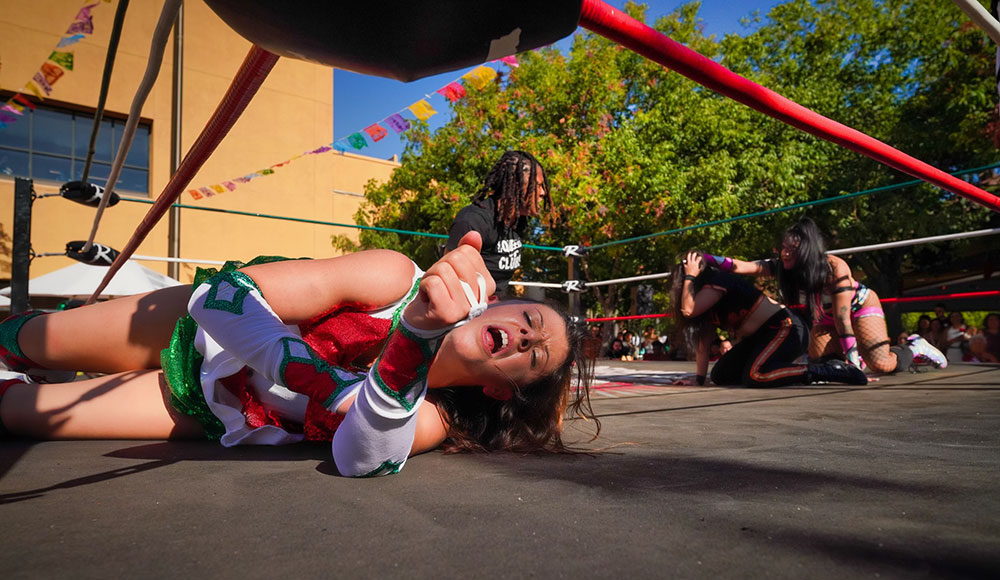A hundred eyes and dozens of camera lenses are fixated on what’s about to happen. The crowd squints against the beaming sun as they watch Karisma climb the ropes and turnbuckles to ascend to the top rope.
Below, J. Mainey, her tag team partner, places the two opponents they’ve just layed out in position for the grand finale.
Once at the top, Karisma leaps off the rope, slicing through the air in a perfect moonsault, smashing into Gypsy Mac and Beatrice Domino on the mat below. J. Mainey then swoops in to help hook their legs for the final count.
“1, 2, 3!” yells the referee, echoed by the crowd. The bell rings and it’s over.
It’s daring. It’s beautiful. It’s painful… It’s lucha libre.
The sport has its origins in the late 1800s, when French invaders brought Greco-Roman wrestling to Mexico. By the 1900s, lucha libre gained a following, bolstered by the creation of the Empresa Mexicana de Lucha Libre, the country’s first wrestling promotion. The lucha mask is the most recognizable element of this phenomenon. With dazzling colors and ornamentation, the mask signifies the wrestler’s transformation into a folk hero.
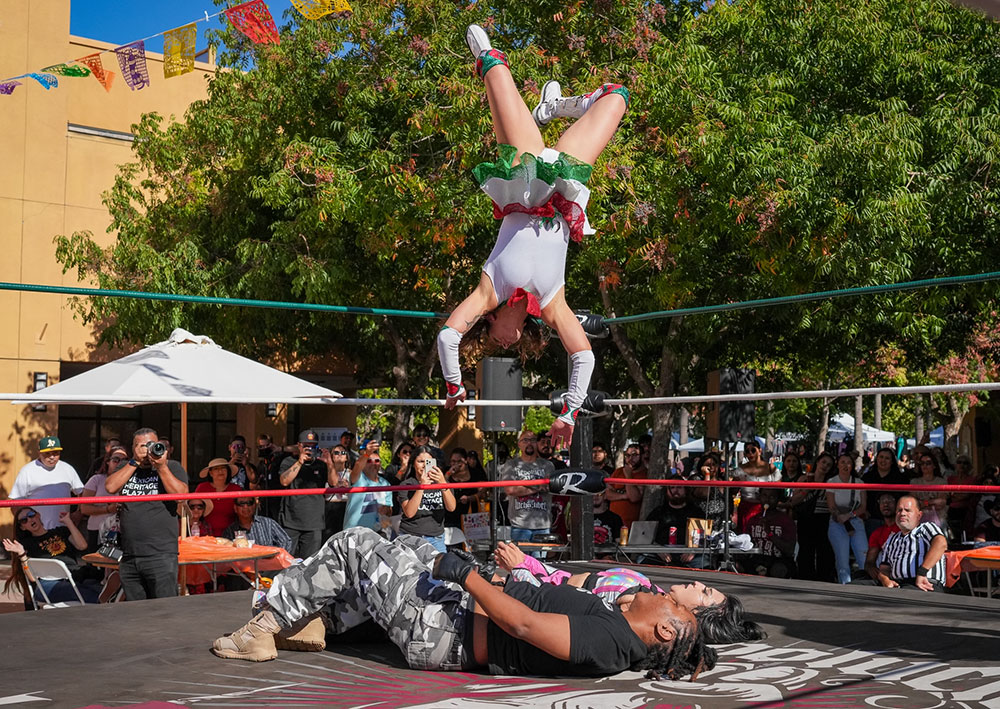

“The mask is the most important accessory in lucha libre because the mask makes a warrior,” said Magno, a Mexican luchador, during a 2016 interview with ABC7 news.
In 2018, the government of Mexico granted lucha libre a UNESCO Intangible Cultural Heritage designation, cementing its importance.
The spectacle I had just witnessed was put on by Pro Wrestling Revolution, a San José-bred lucha libre promotion that’s been bringing the rush of pro wrestling to the South Bay and beyond. PWR was founded in 2008 by Gabriel Ramirez, an East San José native who has more than 25 years of experience in the industry. His mission is to bring Mexican lucha libre to an American audience and export his promotion’s hybrid style to wrestling fans worldwide.
The thrill of the physical storytelling, of the drama and catharsis, is resonating with a new generation and Ramirez is riding the wave. PWR stays busy, being invited to various functions put on by the city of San José. They’re also invited to cultural and sporting events, like San José Earthquakes, Oakland A’s games, Día San Jose and the Metro-sponsored Music in the Park series. It’s also getting attention from media and tastemakers, who recognize the ascendent promotion as a bridge between the American and Mexican wrestling worlds.
On this hot September afternoon, families have descended on the Chile, Mole, Pozole Festival at the Mexican Heritage Plaza in ESSJ to try some tasty, spicy offerings from the myriad food stalls. Coinciding with Mexican Independence Day weekend—and like the name implies—the festival features the best salsas, moles and pozoles in the area. Live bands and different regional Mexican dance groups help elevate the festivities.
But the centerpiece, right smack in the middle of the plaza, is the PWR wrestling ring decorated with papel picado and custom ropes in the color of the Mexican flag. Ramirez arrived early in the morning to set up the ring, which he hauls in a trailer emblazoned with a custom PWR wrap.
After Karisma’s high-flying victory, fans rush the ring to get a photo with her and J. Mainey. One is a little girl donning a luchador mask. Two other girls line up, looking to get a pic with Karisma. Lisa and Athena Sigala, ages seven and five, say that seeing female wrestlers performing makes them feel proud.
“I do this for those kids—especially the little girls—to show them how much potential we really have,” Karisma says. “[Events] like this are why I do this; for the pride and to make people feel proud not only about their heritage, but about being a female. And I get to help show the world that females are strong, females are powerful—we can be feminine, but we can also kick butt.”
Karisma is wearing a glittery Mexican tricolor variation of her usual outfit, which is inspired by the Japanese anime character Sailor Moon. All the PWR wrestlers’ outfits are made custom in Guadalajara, Mexico. As the only woman on the promotion, she is in a unique position to attract others who may think the sport is not for them.


Unlike many fans turned wrestlers, Karisma didn’t get exposed to the craft until her early 20s, when she stumbled upon the World Wrestling Entertainment (WWE) reality show Total Divas. While she liked the idea of women wrestlers being highlighted, when she learned of the struggles they go through in a male dominated industry—and the lack of opportunities for working just as hard—it triggered something in her.
“It lit a fire under me and it made me think, I want to be a part of showing the world that, you know, in a male-dominated sport, females can also show up to the party,” she says.
That’s when the Palo Alto native looked into wrestling schools and found PWR. After meeting Ramirez and checking out the academy, she was sold. Her parents, however, wanted her to wait until she graduated college. But Karisma knew she had found what she was looking for.
“I signed up that day,” she says. “Once I got there and I felt the atmosphere and I met the crew … I didn’t want to walk out of there and not be a part of it.”
“I think Pro Wrestling Revolution, even more, embraced me as a female because this sport is a really difficult sport to find females that will stick with it and who are really persistent with it through the hard bumps; through the difficult training and injuries. Not a lot of women stick around through that. The fact that I stuck around, and wanted to be a part of it, and went along for the ride; they embraced that,” she says.
And Karisma has definitely stuck with it. Now, almost ten years on, she’s a rising star in female wrestling not only in the U.S., but internationally. In 2023, Ramirez set her up with the opportunity to train in the lucha libre style for six weeks in Mexico.
“Gabe is like a father to all of us, he takes care of his own. He will always give the opportunities to the ones that work hard and deserve it,” she says.
Ramirez’s expectations are high, and even the most experienced of his crew can feel the burn when the training gets tough. But he values the hard work ethic, both in his wrestlers and in himself.
Dreams Into Reality
The PWR Training Academy’s practice facility sits in a warehouse district at the north end of San José. Driving through wide, empty streets on a Thursday evening, it’s easy to miss the nondescript building off Rogers Avenue. Sandwiched between an HVAC company and a drywall business, the PRW logo on a glass door tells me I’m in the right place. In the lobby, dozens of framed photos of masked wrestlers in action and promo shots adorn the walls.
Through a closed door in front of me, I can hear muffled thuds and thwacks. Above the frame, a riveting phrase is inscribed: “Dreams Into Reality.” The door opens into a warehouse-turned wrestling haven, and about a dozen men in masks, tights and vinyl boots line the ropes of a full-sized ring. It’s been a hot summer day and the space is hotter from the fluorescent lights overhead, and the bodies slamming on the canvas mat.
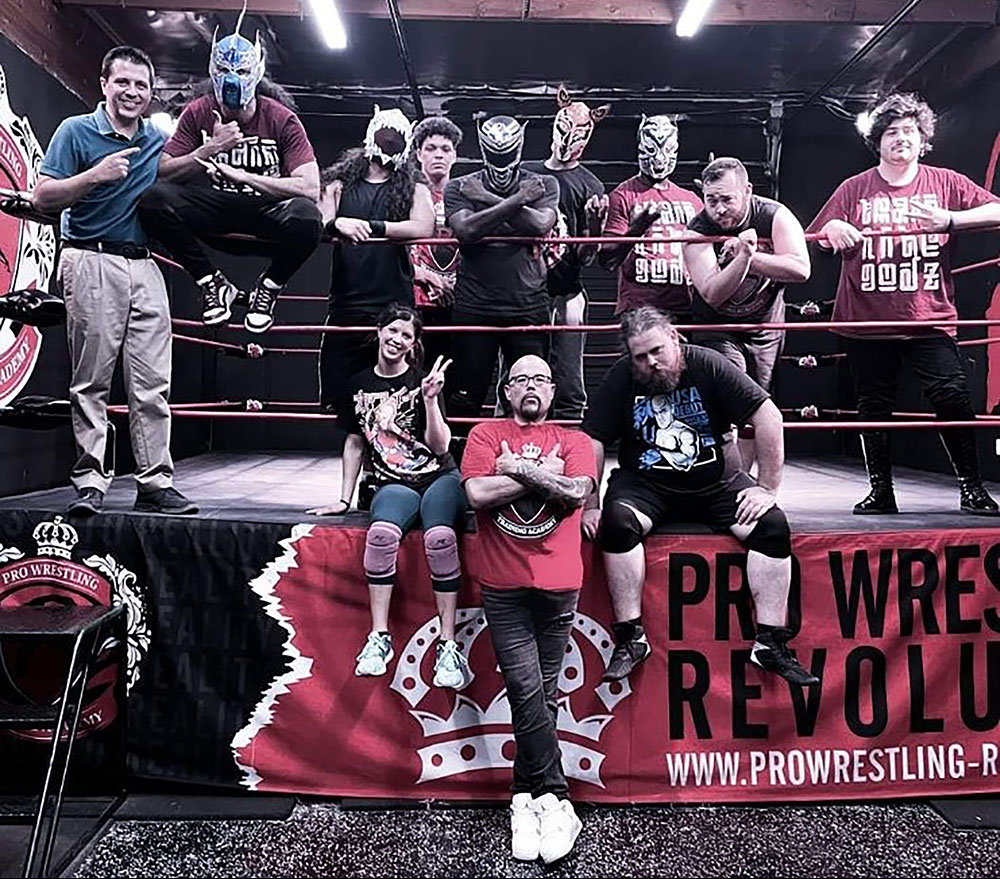

The gazes are set on Ramirez as he paces in the center of the ring, moving back and forth past two exhausted wrestlers.
Class is in session.
“If you ain’t doing the work, go the f**k home!” Ramirez roars. “Next two!”
It’s two days before the event at the Mexican Heritage Plaza and Ramirez is frustrated that some of the luchadores are not executing their choreographed moves to his standard. But he is quick to point out that he’s not a trainer or a coach.
“I would never consider myself a trainer. I don’t think I should ever be a trainer, but I’ve been around this industry for 25-plus years, and I’ve had trainers who have come to live with me and show me their craft,” Ramirez says, as we sit ringside during a break.
Early on, Ramirez, 50, came to terms with the fact that he wouldn’t make it in the industry as a luchador, but he still wanted to be part of the action. In the 1990s, he tried to enter the ring, but didn’t make it past the training gym.
“I tried to train. I trained, and it was the most painful thing I ever did in my life. It sucked. I wasn’t in shape for it—I was way overweight—but I still wanted to do it. And when I realized that, even though I knew I did not have any form of a career whatsoever in the ring as a wrestler, I knew there was a spot for me in this industry.”
Despite the setback, Ramirez stuck around, still showing up to class multiple days per week just to be surrounded by the camaraderie and culture, the things he loved about wrestling.
Around 1997, he started getting involved with a wrestling promotion making VHS tapes of the events. He eventually moved up to being an event coordinator, a position he held for over ten years. Then in 2008, he decided to take his knowledge, passion and connections and strike out on his own. The birth of his daughter was the catalyst for his leap of faith.
“When you have your firstborn, you want to make sure your firstborn has everything better than you did. And so, the last thing I wanted to do is tell her that I did it for somebody else for so many years—which I was,” Ramirez says.
But he was gonna do it his way; he was doing lucha libre and was gonna do it big.
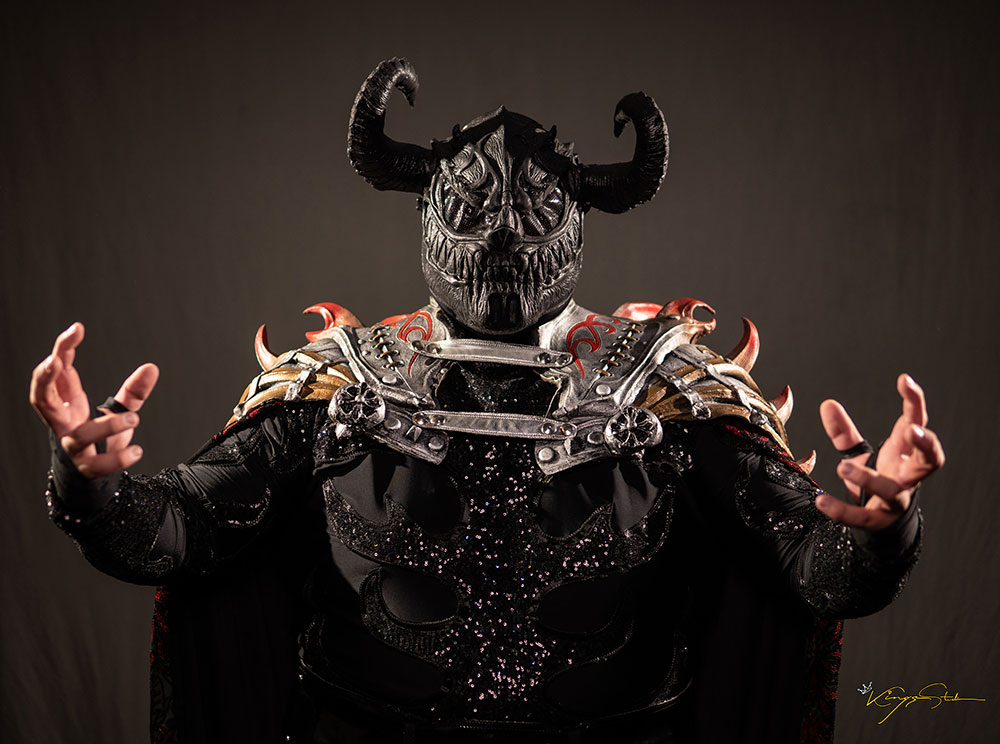

It helped that he had a deep family connection to Mexican lucha libre royalty—though he didn’t know it at the time. As a child, Ramirez bonded with his father over the sport, taking summer trips down to Tijuana to catch matches. He was dazzled by the colorful masks and soaring maneuvers. So when he was putting together his first events, his aunt in Tijuana casually suggested he reach out to legendary luchador Rey Misterio.
Ramirez initially laughed at the idea, but his aunt was serious: Rey Misterio happened to be a family friend. When he got Ramirez’s call, he agreed to help him and drove the seven hours to San José to help him get started by headlining matches. Slowly, it started growing.
“Lucha libre hadn’t really been done in this area. [The shows] would come once, take your money and leave. There was never a home promotion that gave you lucha libre.”
A local Spanish language publication took note and connected Ramirez with gigs all over the Bay Area. Soon, money started coming in and he could take the events to the next level, flying luchadores in from Mexico. Some of the first events were held at the Mt. Pleasant High School gym.
Now, the site is host to PWR’s biggest shows of the year, like the upcoming Oct. 26 performance featuring Mexican all-stars like Tinieblas Jr, Aliushe, Viento and Bendito. Karisma and other PWR luchadores like El Cucuy will also compete. Ramirez doesn’t want to speculate on how many attendees he’ll draw, but the 1,000-person capacity has a chance at selling out. It’s like their mini Wrestlemania.
Wrestling is seeing a surge in popularity worldwide. WWE, the oldest and most influential promotion, recently merged with Ultimate Fighting Championship (UFC) in a $9.3 billion deal. In August 2024, WWE broke records when its Wrestlemania 40 tickets sold out in less than 24 hours, amassing over $12.5 million sales.
While the outlook is good for business by those measurements, Ramirez is more cautious in his assessment.
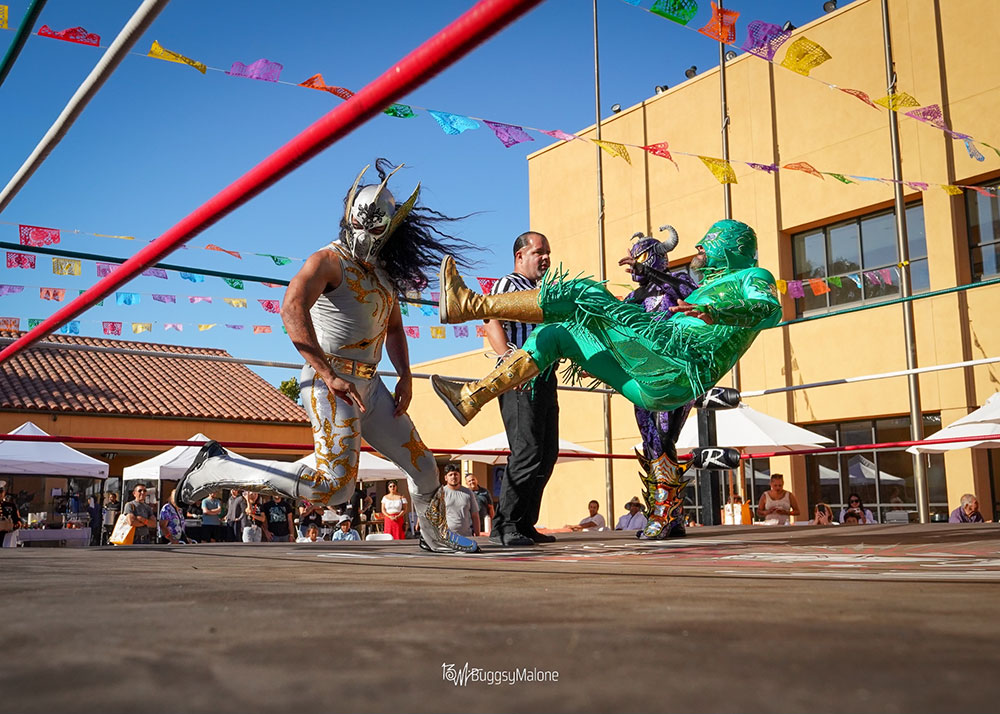

“When it comes to our industry, you can never say ‘peak,’” Ramirez says. He thinks it all is dependent on the economy and how wrestling is doing globally.
However, he does believe that the increased popularity and influence of lucha libre in US wrestling is also growing the sport in Mexico.
“When they start seeing that mexicanos have influence on our culture here in the States, it blows up even more in Mexico, which means more people want to do it: more students, more activities, more shows, and it just snowballs, really.”
The most famous and successful luchador is arguably Rey Mysterio, not to be confused with Rey Misterio (notice the difference in spelling), his uncle, who helped kick off PWR. Mysterio, who has been active since the 1990s, is signed to WWE and has an estimated net worth of $10 million.
As the cross-border influence grows, more luchadores are trying their luck in the US.
Lanzeloth, 28, is a Mexican luchador from Tunancilgo, Hidalgo, who is currently on a two-month stint with PWR. He’s not only competing in matches, but is also training some of the wrestlers to improve their lucha skills. He comes from a long line of luchadores, like former WWE star Super Crazy, his uncle. He’s a former world champion with Mexico’s Lucha Libre AAA Worldwide promotion.
He says that the clash of wrestling styles in the ring creates more excitement.
“Mexican lucha, Japanese lucha and American lucha are completely different. But, for example, when an American wrestles a Mexican, it’s an explosive match. Sparks will fly,” Lanzeloth says.
He is supportive of the young Mexican-American wrestlers in PWR who want to learn the Mexican style, but says it takes a lot of work.
Whether it’s learning a new style or just showing up to improve on what they know, these future stars are willing to grind at it. Some make sacrifices and work through the pain. Others discovered new ways of being and have broken out of their shell.
‘We’re All a Little Crazy’
Nicky Savage has loved wrestling since he was a toddler. He stumbled upon it on TV and it has kept his attention ever since.
“It’s just that pure excitement, you know, watching your favorite cartoon; Spider Man, Batman, Teenage Mutant Ninja Turtles, whatever it may have been, that excitement of like, ‘Oh, this shit is on, and this is gonna kick ass, and this is gonna be the best night ever,’” Savage, 36, says, in a phone interview.
“That was basically what watching Hulk Hogan did for you. Just like, ‘Holy shit, nothing else matters. This has my attention. Everything else, go away.’”
Hailing from the small town of Fort Bragg in Mendocino County, Savage never thought he would turn his passion for the sport into a role in the ring. It all started with a wake-up call in 2013. His doctor told him he was running the risk of developing serious health issues at only 25 and that he needed to lose weight. And Savage listened, eating better and following an exercise regimen developed by none other than former wrestling star Diamond Dallas Page. After a year, he had lost 80 pounds and was ready for something more. Then he found PWR.
“Obviously, I’ve loved wrestling since I was two years old, so I wanted to be older and not have any regrets. So I told myself, ‘Dude, what if I just give it a shot?’ At pro wrestling, that is. And I searched everywhere in the Bay Area and San José. And then I found Pro Wrestling Revolution,” Savage says.
Much like a normal gym, the academy charges a monthly $200 fee. Savage went all in and paid for a year up front. It took him a year and a half of hard work to finally make his debut. Out of all the people who were in the training academy when he started, he says only a couple remain.
“There’s plenty of turnover. A lot of people just want to come check it out. A lot of people really want to do it, but you just struggle. It’s a small amount of people who actually can stick around. I think you really have to be driven and borderline obsessed, kind of like an artist would be,” Savage says.
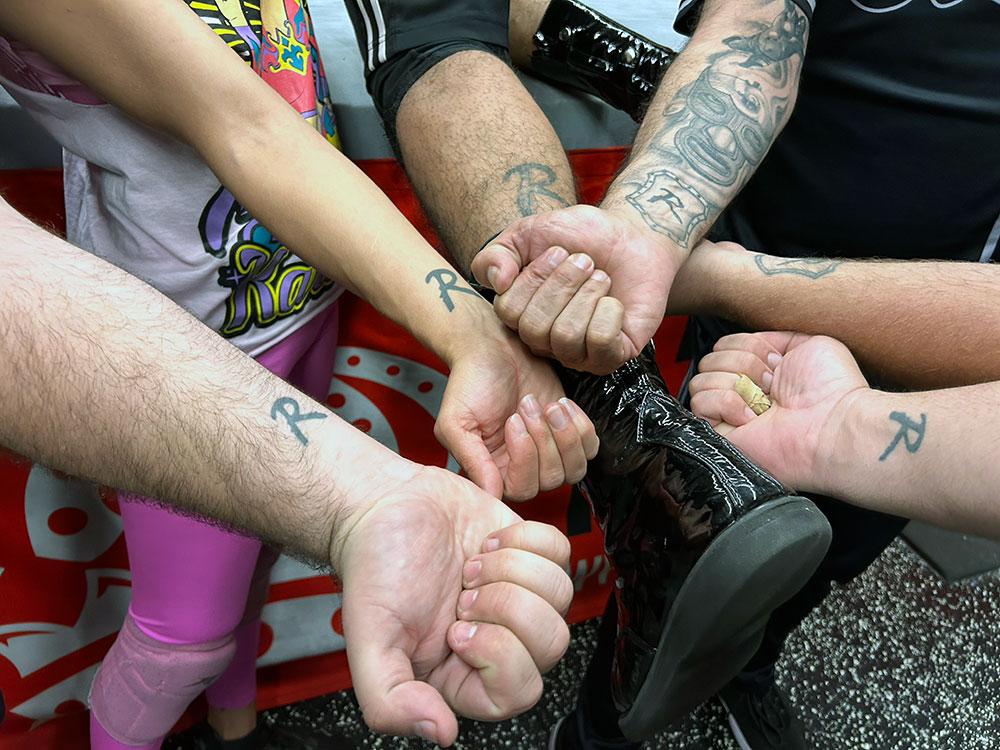

For others, like Savage’s colleague El Cucuy, the expectations inside the ring have developed his sense of self outside the ring. Before showing up to the training academy in 2016, he was a shut-in and wanted to build his self esteem. He grew up in San José and got into wrestling after seeing it on TV as a teenager. He remembers the first time walking into the gym.
“Even though it was the first day, I was still surprising myself. I was doing things I never saw myself doing,” Cucuy, 25, says.
“I went into it thinking ‘I know this is probably not gonna be easy.’ From a fan [perspective] you think it’s all fake. It’s not! It hurts! Everything hurts! My body is so sore 24/7, but I still get up and do it every day.”
What Cucuy and others get with Ramirez and PWR is a chance to work toward constant self improvement. When asked what he has found at the academy that he can’t find anywhere else, he knows the answer right away.
“Probably straight up brutal honesty. There’s no beating around the bush as far as your performance. You’ll probably be told what you did wrong and not just be told ‘good job’ every time,” he says.
It also took him a while before he made his debut, which Cucuy believes is a good thing. He thinks that other wrestling academies rush into putting trainees into matches before they have enough experience. But he’s getting plenty of experience. In 2023, Ramirez sent Cucuy to Tokyo to train with the renowned Pro Wrestling NOAH promotion. For weeks he focused solely on training and eating right and competed in matches. Sitting in the lobby of the PWR gym, he points out a photo of him raising his arms in victory after a match in Tokyo.
Ramirez says he wants to help people get where they want to be, but in the right way.
“My goal is always to ask people who come here, ‘Why are you here?’ If your goal is to do Wrestlemania, if your goal is to wrestle in Japan, I’ll take care of it. The problem is, though, you have to work equally as hard. … So if your goal is to go to these places, we’ll facilitate you getting ready to get you there,” Ramirez says.
Karisma says that in order to commit to enduring the physical toll of training and injuries (she’s had fractures, concussions and surgeries), it takes a certain kind of person. The commitment runs so deep that Ramirez and some of the wrestlers have marked it on themselves for life.
On a Thursday night at the PWR gym, Ramirez, Savage, Karisma, Cucuy and others gather around me to show their tattoos of the promotion’s “R” logo.
“We’re all a little crazy,” she says. “I think it takes a creative mind to be in this sport because we’re always working on different things and coming up with new stuff—how to set ourselves apart from everything else that’s going on out there.”
Despite the setbacks, Karisma and others come back stronger because of the family they’ve found. And that it has become a support system in the face of personal tragedy.
“I got through losing my father, and my father is my inspiration now to keep going. He got to see me wrestle one time, and now he gets to see me wrestle every time I’m in the ring.”
Lucha Libre night will be held on Oct. 26 at Mt. Pleasant High School, 1750 S. White Rd, San José. For tickets visit prowrestling-revolution.com.
